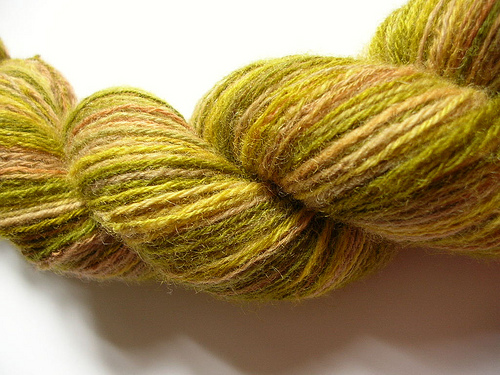
Once you have spun, plied, and finished your handspun yarn, you have to wonder: what am I going to knit with this? And how?
The first challenge to knitting with a yarn that doesn't carry a ball band label is figuring out what weight it is. This will let you decide which needle you want to use. There is no hard and fast rule, of course, and just like any yarn substitution, it depends a lot on how you knit (loose or tight) and what effect you want in the finished fabric (stiff or drapey).
First, count the yards. If you have the right niddy noddy, this will be easy: just count the strands in your skein and multiply as needed. If you have a somewhat-crappy homemade niddy noddy like myself, you have to do some mental gymnastics to get the right count.
Next, weigh your skein. A regular digital kitchen scale is practically mandatory equipment for any spinner. (And it's handy for knitting, too.)
Now that you know how many yards you have to the ounce, you can find out what kind of yarn you have. Multiply it up so that you know how many yards you have per pound, and you will be ready to use a guide like this one.
You can also use WPI (wraps per inch) but I personally have a terrible time measuring WPI accurately. If your yarn's thickness is inconsistent, or if you just have a hard time wrapping them right (don't crowd; don't stretch) WPI calculations can get thrown off pretty easily.
Then - and this is an important point - go up a needle size. Handspun yarn tends, weirdly, to be bigger than commercial yarn of the same size. This Knitty article theorizes that it's because commercial yarn is compressed, and puffs out once you knit it.
And finally, you know what I'm going to say here! Swatch, swatch, swatch!
Image courtesy Flickr/projektleiterin

0 comments